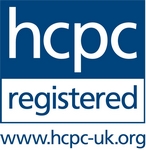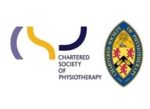Your Condition: Your Treatment
Lower Back and Sacroiliac Pain
Your guide to different shoulder conditions.
Please 'click' the name of the condition or treatment to reveal more information
Overview of condition
Lower back pain, facet joint irritation and problems surrounding the sacroiliac joint affect millions of people on a daily basis. Whilst there are many treatments available the key factors in attaining best health and reducing pain are always the same.
Correction of spinal mechanics: Good alignment and posture is essential. There is no way around having a good healthy back without achieving spinal alignment, postural strength and your best pattern of movement. If your muscles lack conditioning, you slump in chair or constantly bend forwards from your spine, then you will eventually suffer back pain. It is simply just a matter of time.
When an individual strains their back there are different parts of the spine and different tissues that can become irritated and even damaged. The specific conditions listed in this section discuss some of the more common problems.
Treatments for back pain and the SIJ also include correction to the joints chemistry.Often back problems initiate an inflammatory process and in this situation guided cortico-steroid injections can provide much needed relief.
Please identify your problem and 'click' to reveal more information. If you are not sure what your problem is then please book an appointment.
Facet Joint Irritation
Irritation to spinal facet joints is more common than most people think. Facets are thumb sized joints that help stabilise the spine and restrict excessive movement.
What can go wrong?
Poor posture and/ or extreme stretches: in particular leaning backwards, places increasing mechanical strain on the joints.
Over time the joints can degenerate and even fracture.
Leg and Back Pain
The pain experience is varied and because people associate severe back and leg pain with 'trapped nerves' the diagnosis of Facet joint irritation is often overlooked.
For more information visit the web-page article on Facet joint pain and injections.
Facet Joint Treatment
Correct the mechanics
Treatment for facet joint irritation includes advice on posture, core strength and recommendations regards movement patterns. From putting on your socks to swinging a Golf club and cleaning your house; how we move can either increase or decrease the strain on our spine.
Correct the chemistry
When irritated, facet joints are a common source of inflammation and therefore respond well to guided cortico-steroids.
By using ultrasound to guide the needle accurately into the facet joint as opposed to x-ray, Injection Clinic is able to provide this treatment at a much lower cost than private hospitals.
Sacroilliac Pain
Who gets it?
Pain from the Sacroilliac Joint (SIJ) typically affects more women than men. There is a high incidence SIJ pain in pregnant women because of the increased mechanical strain.
SIJ pain can also arise from trauma; whiplash injury's and ground impact trauma can place high levels of mechanical strain through the joint resulting in tissue damage and inflammation.
SIJ Inflammation
There are numerous inflammatory conditions that have association with SIJ pain including Anakylosing Spondylitis (AS).
Sacroillitis ( inflammation of the SIJ) can also occur as an isolated condition.
As with all problems the first step is to determine a diagnosis.
Sacroilliac Treatment
Treatment for the SIJ involves both correction of the joint mechanics and chemistry.
Injections
Ultrasound guided injections can administer medication directly into the joint. With an inflammatory condition such as Sacroillitis, the injection of cortico-steroids help reduce pain.
Core strength and mobilisation.
The SIJ needs to be stable weight bearing joint; the main movement comes from the adjacent hip joint. Consequently exercises to help improve stability of the pelvis (SIJ and lower lumbar spine) whilst encouraging good movement from the hip is a key factor in regaining normal joint function.
Lumbar Disc Hernia
Slipped Disc?
For many people the term 'slipped disc' is associated with 'trapped nerve' and 'sciatica'.
The reality is that the term is used for more frequently than the condition actually exists.
But the pain is really bad
Shooting, stabbing, burning pains and pins and needles are some of the words used to describe back and leg pain. These words are not however diagnostic.
A person with Trochanteric Bursitis, facet irritation, OA hip, meralgia paresthetica are just some of the conditions that can elicit a horrible pain that is felt in the leg.
Disc protrusion
A disc protrusion or herniation is a more correct way to describe changes to a spinal disc. If the protrusion of the disc is large, then mechanical pressure can be placed onto near by neural tissue (nerves).
If the pressure on the nerve is extreme, then the nerve will stop working. This results in muscle weakness. This is not a common pathology, but can happen.
Clinic signs include foot drop or a reduction in the size of your calf muscle.
Clinicians will ask about your bladder and bowel to make sure your nerves are working to control these functions.
Often people get concerned because their bowel is affected by medication, not nerve compression.
Disc Degeneration
A very common finding is the reduction of disc height. As we get older the spinal discs loose water content and are less 'plump'. There is less cushioning and less space between the spinal bones and therefore mechanical strain can elicit a painful warning.
For the vast majority of people 'Spondylosis' and 'Disc Degenerative Disease' is the equivalent of saying you have got older.
If in doubt check it out
The problem with back pain is that it really does hurt and we often assume the worst. This often makes the problem an even bigger issue.
MRI scans are an excellent way to determine the status of discs and spinal health. Unfortunately they are not easily accessed in the NHS. There are however a growing number of private MRI centres. If you want to see if an MRI is appropriate or to discuss the findings of your MRI then please book an appointment at Injection Clinic. With over twenty years clinic experience we can help you make sense of your problem.
Lumbar Disc Treatment
When diagnosed correctly, the treatment for a lumbar spine disc problem is seldom focused on the disc itself.
The main treatment is to correct posture and movement patterns. This approach aims to decrease the mechanical strain on the disc.
Only if a disc has a large protrusion and is placing significant pressure on adjacent nerve tissue would surgery become an appropriate consideration.
Injection Clinic works with both Osteopaths and Physiotherapists. These professionals can guide a person through their rehabilitation. Having the correct diagnosis and receiving the correct advise on rehabilitation is important.
Injections for nerve root irritation and epi-dural injections are not administered outside of the hospital environment due to increased risks.
New Patient Appointments
Examination
and
Ultrasound Scan
£90


